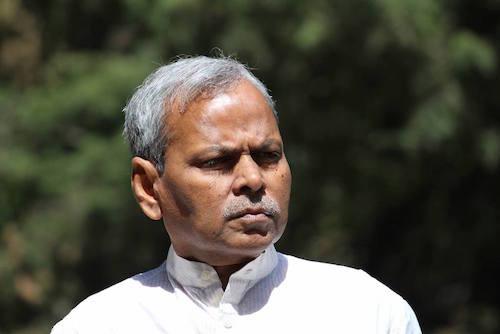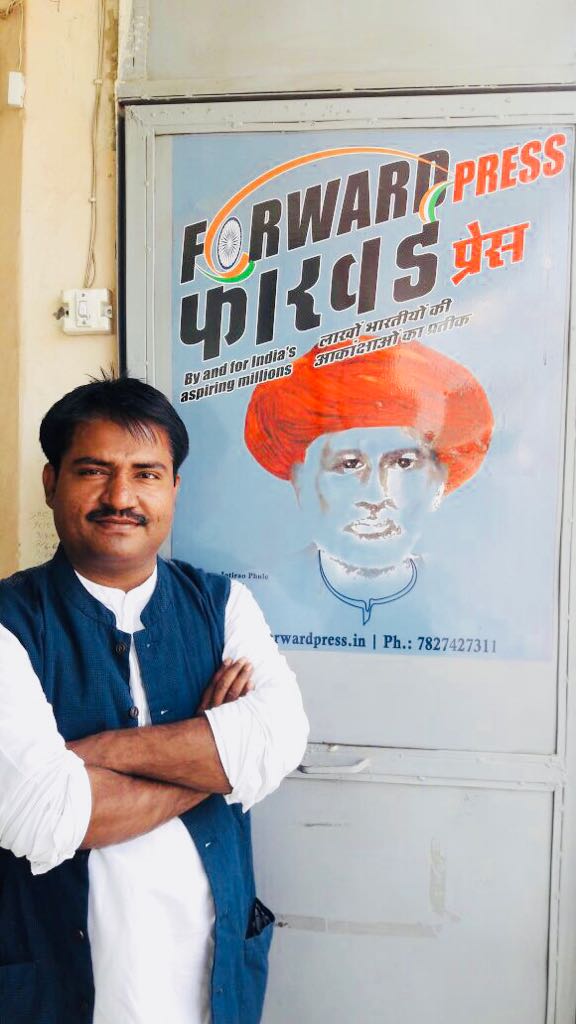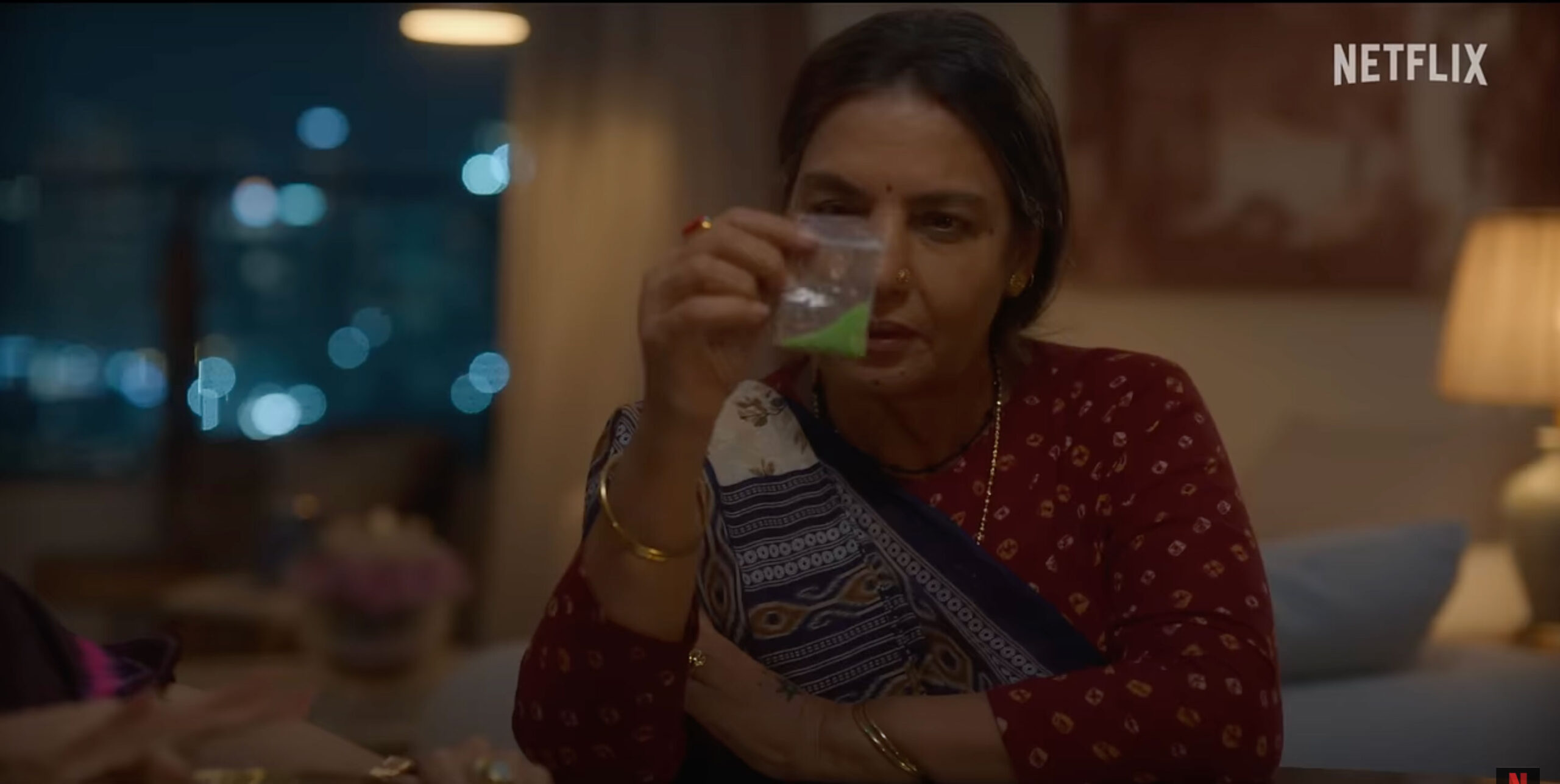 The demand for caste census is an old one. In 2011, the Bahujans were vocal in their demand for a caste census. At that time, the then UPA government had assured Parliament that a caste census would be conducted. But later, the government backed out and the column of caste was not added to the enumeration forms in the 2011 census. How do you see this?
The demand for caste census is an old one. In 2011, the Bahujans were vocal in their demand for a caste census. At that time, the then UPA government had assured Parliament that a caste census would be conducted. But later, the government backed out and the column of caste was not added to the enumeration forms in the 2011 census. How do you see this?
Decadal census began in the British era in 1861. At that time, caste-wise figures were also collected. The objective might have been to know how many and what kind of people live in the country. The mutiny of 1857 had taken place a couple of years before the first census and had been followed by the rule of the [East India] Company being replaced by the rule of the Crown. At that time, there were rumours that the government would treat the people according to their caste. If their caste was higher up in the hierarchy, they would be treated well and if their caste was lower down the rung, they would be treated as second-class citizens. This created turmoil in society. My studies of Bihar society show that at that point in time, suddenly, caste organizations began cropping up. Representations were submitted to the government officers by these bodies saying that their caste is higher for such and such a reason. Thus, the result of the decision to conduct a caste census was a mixed one – it had its pluses and its minuses. But this contention of the post-Independence Dwij scholars is baseless – that census promoted or accentuated casteism. Castes already existed. The government only counted them. Anyway, governments should have access to all kinds of data. Since then, census was conducted every ten years. Till 1931, the population of different castes was also counted. The 1941 census could not be completed due to the World War. In 1951, the new Indian government refused to a conduct caste census. This was the Nehruvian approach.
In 2011, a decision was taken to resume caste census. The Bahujans had kept demanding it. Moreover, it had become imperative after the announcement of the implementation of the Mandal commission report in 1990. The government should have up-to-date figures. Only then can it decide which castes or communities need to be given special facilities. The fact is that the UPA government lacked clarity of vision. That messed up the situation. The decision to conduct caste census was taken very late and the government is still not clear on how to go about it. The government recognizes only four social categories – SC, ST, OBC and Others. The government has data on SCs and STs. It should have figures on OBCs too. This will also reveal the numbers of the dominant classes. I don’t think a caste census will hurt anyone’s interests.
Do you think that a caste census is in the national interest? How will the country benefit from it?
I ask you a question. Just tell me how will it harm the nation? As I have said earlier, statistics are needed to design programmes. We count the number of people suffering from different diseases, don’t we? Then there is an economic category called BPL. Those who fall in this category are also counted. This is all routine. What is so revolutionary about caste census? It will only throw up a set of figures. Why this hullabaloo?
Some people believe that just as the Mandal Commission had changed the political idiom of the country, the report of the caste census would trigger sweeping changes in politics. Do you subscribe to this view?
The people who think so are fools of the first order. Everyone knows that the members of Dalit and OBC castes are languishing behind others in every field. The census will only confirm this fact. Nothing more. Heaven won’t fall if that happens. When the Mandal Commission report was implemented, there was a movement to oppose it. But there was no movement in its support. Most of the newspapers carried satirical articles, berating the decision. Barring a handful of journalists like M.P. Singh, no one was ready to write in favour of Mandal. Now, there is a demand for publication of results of the caste census. But no one is opposing the demand. Those who are demanding publication of the data are old, tired and spent leaders of the Backwards, who have little else to do. They lack a vision too. The forward classes know that it will change nothing and so they are keeping mum. We should understand that counting will serve no purpose in itself. What is important is crafting of proper policies and their sincere implementation.
The OBCs should demand that the report of the NSSO survey be made public. What was done with the results of the survey should also be made public. At that time, a newspaper had carried an article by Satish Deshpande. It said that the condition of the OBCs is on a par with STs and not with the “Others” (general). Yes, a section of the OBC is prosperous. But even they have to face humiliation at the social level. The National Commission for Backward Classes should disaggregate the OBC and it may well be found that the real OBCs are as backward as the SCs. In fact, in some regions, the OBCs are worse off than the SCs. In some areas, they are behind SCs even in economic terms.
What has been conducted in the name of caste census is, in fact, a survey. Do you consider it enough? Will the figures be reliable? Will they serve the purpose of the counting?
When I have not seen the report, how can I say whether it is enough or not? But I’m guessing there isn’t much to it. And why should I question its reliability? Do I have any alternative agency to collect figures? All my conclusions, all my arguments are based on government documents, on government figures – whether of the British government or the present government.
In Bihar, as far as OBC politics is concerned, two main agendas are clearly visible. The DNA test is on Nitish Kumar’s agenda and agitation to demand release of census figures on Lalu Prasad’s. Would you like to comment on the politics of the two leaders?
Nitish Kumar and Lalu Prasad both have some desirable qualities and some shortcomings. I have worked with both of them. I was friends with Nitish Kumar for a long time and I still have a soft corner for him. Nitish and Lalu too have been friends. They were in warring political camps for long. Now they are together again. This is good. Long ago, I had written in an article that they will forge a common front. I was not privy to any information. It was only my assessment, which proved correct.
But this union is rather anomalous. For instance, social justice is no longer the central element of Nitish Kumar’s JD-U. I can say with full conviction that today, the JD-U is a sanctuary for Savarnas and feudal forces – even safer than the BJP. I was one of the founder members of the Samta party – the predecessor of JD-U.
In 2005, we worked very hard to form our government. We believed that Lalu Prasad had lost steam and that the battle for change could effectively be fought under the leadership of Nitish Kumar. In the initial days of his government, Nitish Kumar did show promise. We wanted to set up the Land Reforms Commission, Common Schools Commission, Extremely Backward Classes Commission and Mahadalit Commission, and Nitish did all this. But it did not last long. Soon, the dominant classes took him under their sway. The OBC leaders are not very good at sycophancy. Once, during a conversation, Nitish had told me, “Mani ji, I am going to do something that even the communists could not do. Maybe, after this I will have to face bullets. But I am going to do it. I am going to implement land reforms.” I was rather taken aback. I was so overwhelmed that I felt he was some sort of semi-god. But what eventually happened, we all know. The agenda of land reforms and common school system was put into cold storage and then buried deep. A new commission called the Savarna Commission – a commission for the upper castes – came into being. How could have people like me kept silent? I opposed the decision and I was thrown out of the party. I was stripped of my membership of the Legislative Council. Whosoever raised his voice in favour of social justice was stifled. Just see how Jitan Ram Manjhi was humiliated to the extent he was forced to join forces with the right-wing camp. The traditional unity of the Dalits and the OBCs, which was nurtured by people like Karpoori Thakur and Kanshi Ram, was destroyed by Nitish Kumar. Now, by launching a movement on the issue of DNA he wants to make the anti-BJP movement centred on him. He is fighting less against BJP and more against Lalu. He wants to isolate Lalu and push him into political wilderness. He thinks he is making very smart moves.
Lalu Prasad’s character is quite different. He comes from a landless family. His mother used to sell curd. His brother was a peon. Before he became the chief minister, he lived in the chaprasi quarters (government accommodation for peons). He has seen poverty. He knows what irritates the rich, the landlords and the so-called big people. He got Dalit rest houses built bang in the middle of posh colonies. He did precisely what he knew would rub the rich and the powerful the wrong way. His weakness was that he did not pay adequate attention to bringing about fundamental changes. But there must be some reason why the Dwij, feudal elements consider Lalu their biggest enemy. As for Nitish, the Dwij, feudal forces have only one complaint against him – that he broke away from the BJP. But can this alone make him the natural leader of anti-BJP politics? As for the Dalits and EBCs, he is already a villain.
What should be done to fulfil the real needs of the OBCs?
This question is difficult to answer. But I can make some points. Fundamental changes are needed in the field of education. This should be done on a priority basis. The main slogan of the JP movement was basic changes in education. That was why we were in favour of a Common School System and still are. Both the leaders, who were products of Chhatra Sangharsh Samiti (A students’ organization founded in 1974), have brushed the issue of Common School System under the carpet. Twenty-five years is a long time. It is a quarter of a century. Nothing was done in this direction in this period. This inaction has cost society dearly. Everyone – whether rich or poor, whether landlord or labourer – should study in common schools. All private and religious schools should be shut down. This will usher in socialism in education. It will generate a tempest of knowledge – something which even Kabir would not have imagined.
The second agenda should be of leadership development. The present leadership of the Backwards is intellectually poor and immoral. They only walk on the trodden path. They have only wishes and ambitions, no commitments. Today, the attempt should be that Other Backward Castes should become the Other Backward Class. The class identity should subsume the caste identity. For that, we will have to take the path shown by Phule and Ambedkar.
Focus should also be on forging a common front of the Dalits and the OBCs. In 1992, after the demolition of Babri Masjid, Kanshi Ram joined hands with Mulayam Singh and made the then politically strong BJP bite the dust. The slogan was “Mile Mulayam, Kanshi Ram, Hawa Ho Gaye Shri Ram” (Mulayam, Kanshi Ram came together and Shri Ram was blown away). But Mulayam Singh committed a political blunder. He could not keep Kanshi Ram with him. The same was done by Nitish Kumar in Bihar. He has committed a fatal error by breaking away from Jitan Ram. At that time, I had written a letter to Nitish Kumar to warn him against doing this. But he did not pay heed. Today, he wants to take on the BJP without winning the confidence of Dalits. I have serious doubts about his success. Without the co-operation of Dalits, the OBCs cannot hope to win any battle. The same is true of Dalits. That is why, I want a big political conclave to be held, policies to be made, programmes to be drawn up. The strategy for waging the battle should be designed and then a viable, powerful alternative built. Only the coming together of two or more leaders will not work. There should be a dialogue with the people.
Prem Kumar Mani is a leading Hindi writer, thinker and political activist, with strong commitment to social justice
Published in the September 2015 issue of the FORWARD Press magazine





